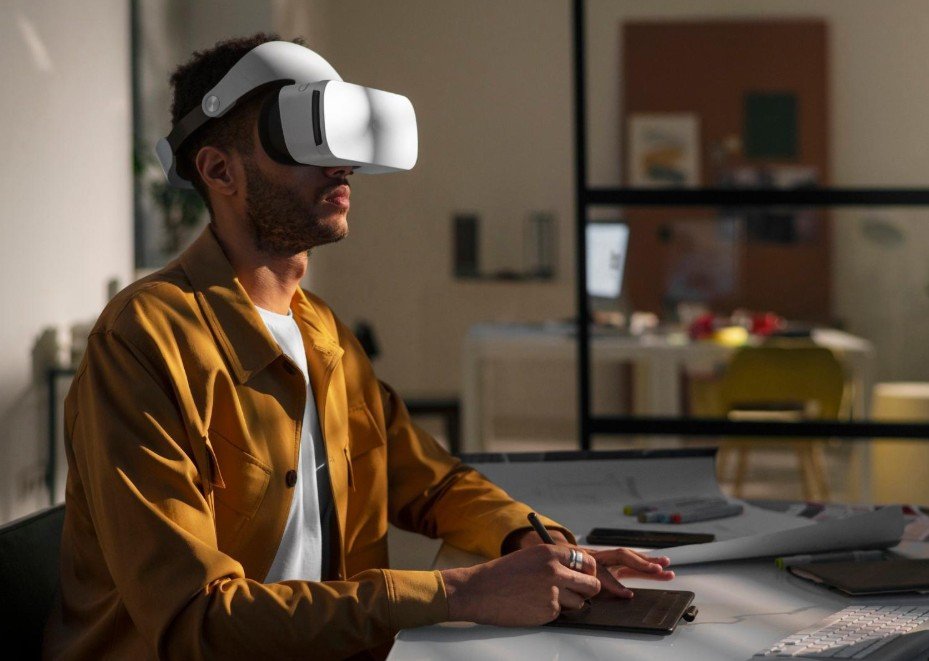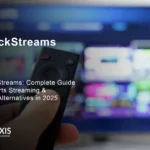If you’ve ever completed a typical online training course with slide after slide and a quick quiz at the end, you probably walked away thinking, “I’ll forget most of this by tomorrow.”
Now, think about something different. You put on a headset, and suddenly, you’re in a virtual operating room, practicing a delicate procedure as if it were real. Or maybe you’re in a flight simulator, working through an emergency landing, completely safe and without any real passengers at risk. Maybe you’re diagnosing and fixing a piece of complex machinery – all without the cost, danger, or downtime of the real thing.
That’s what LMS and AR/VR integration makes possible. It blends the engagement and realism of immersive environments with the structure, tracking, and scalability of a Learning Management System. For companies racing to upskill teams, keep knowledge fresh, and meet tough compliance rules, it’s not just a cool upgrade. It’s a real edge over the competition.
What Modern LMS Means and Who Needs It
A modern learning management system (LMS) does much more than just store courses. It’s the central hub for your organization’s training needs:
- it helps you see how employees are progressing,
- provides them with the right content when they need it,
- and keeps everything connected with HR and other business systems.
For most businesses, a standard LMS is a significant step forward. However, in industries where errors can cost lives or huge sums of money, such as aviation, healthcare, energy, and defense, a standard LMS isn’t enough. Teams in these fields need training that goes beyond reading slides or watching videos. Immersive LMS experiences allow employees to practice critical tasks in a safe, realistic environment before touching real equipment, thereby reducing risk and building confidence.

Why AR and VR in LMS Matter
AR and VR are transformando education through interactive and immersive training experiences. One of their most significant strengths is their ability to simplify abstract concepts through visualization.
Let’s look at some examples:
- Think about a trainee surgeon learning a new procedure. In a standard eLearning module, they might watch a video and answer questions. In an AR/VR-enabled LMS, they can walk through the entire operation, interacting with instruments and responding to simulated complications. The LMS tracks and assesses all of this.
- VR isn’t just for gaming. It’s already proving its worth in critical industries. In aviation, it’s helping train the 550,000 pilots expected to be needed over the next two decades, cutting training time by 30–65% compared to traditional programs.
- And it’s not only about flying. In healthcare, the stakes are just as high. Just as immersive simulations prepare professionals for emergency landings or mechanical failures, HIPAA training helps medical teams protect sensitive patient data in an ever-changing risk environment. A single mistake can cost millions — and, even worse, break patient trust. That’s why bringing AR/VR into an LMS isn’t a nice experiment here; it’s a necessity.
From Idea to Implementation: The Business Lens
If you’re in a position to rethink your training strategy, you’ve likely asked yourself: should we adapt our existing LMS or start from scratch? This is where custom LMS development comes into play. When you decide to build your own LMS, you’re free to design for AR/VR compatibility from the ground up, ensuring that immersive content isn’t just bolted on but fully integrated – from tracking simulation performance to syncing with compliance reports.
Off-the-shelf solutions can work for smaller rollouts, but enterprises often find that tailoring their platform gives them better control, scalability, and long-term ROI.
The Benefits of Integrating AR/VR into Your LMS
From a business standpoint, the move isn’t just about technology. It’s more about outcomes. Here’s why companies are making the shift:
- Higher retention and faster learning. Immersive simulations engage multiple senses, making training “stick” far longer than passive learning. This directly reduces retraining costs.
- Risk-free practice for dangerous or costly tasks. Whether it’s handling hazardous chemicals or piloting an aircraft, mistakes in VR cost nothing but can save lives.
- Scalability without physical constraints. Once developed, AR/VR scenarios can be deployed to thousands of learners worldwide with consistent quality.
- Personalized learning at scale. LMS data can adapt simulations to match a learner’s skill level, speeding up mastery.
- A stronger employer brand. Employees see that you’re serious about their development, and potential hires see a workplace that invests in its people. This is a powerful message in a competitive job market.
And the timing couldn’t be better. By 2030, the immersive training market is projected to reach $69.6 billion, growing at an impressive 28.3% CAGR from 2025 to 2030. This surge is driven by rapid advances in VR and AR that make training more lifelike, easier to access, and far more effective. Companies that act now won’t be scrambling to catch up later — they’ll be setting the standard others try to match.

How to Integrate AR/VR into Your LMS
When implementing immersive learning technologies, current AI trends should also be taken into account. It is not enough to simply purchase a headset. It is a more strategic process:
First, align your use case with business goals. Are you reducing onboarding time? Meeting compliance? Enhancing safety protocols? This clarity ensures the investment directly impacts key metrics.
Second, choose the right hardware and software ecosystem. AR is ideal for overlaying information in real-world environments – think field engineers receiving live maintenance instructions. VR is better for complete simulation, such as flight or medical training. Some industries benefit from extended reality (XR) for education, blending both approaches.
Third, make sure your LMS captures more than just pass/fail: track reactions, choices, and paths through simulations to personalize future learning.
Finally, ease learners into immersive tools with guided sessions, peer support, and a clear explanation of why it matters. The smoother the start, the quicker they engage.
Challenges and Things to Consider
Keep in mind that even companies ahead of the curve face challenges when combining immersive technology with LMS platforms. Here are the key ones:
- Content development costs. High-quality AR/VR scenarios take time and budget to create. The ROI comes from repeated use and scalability.
- Hardware management. Devices require updates, hygiene protocols (especially in healthcare), and integration with IT policies.
- User accessibility. Not every learner is tech-savvy, and some may experience motion sickness in VR. Providing options and gradual exposure can help.
- Integration complexity. Not all LMS platforms are AR/VR-ready. Compatibility checks, API connections, and testing are essential before launch.
- Security and compliance. As immersive training often handles sensitive data, compliance with industry regulations is critical — from HIPAA in healthcare to FAA rules in aviation.
Reflexiones finales
When people get to try things for themselves, learning changes. In immersive LMS training, employees can explore, make mistakes, and see the consequences — without anyone getting hurt or expensive equipment being damaged. That kind of hands-on practice sticks.
There are challenges, sure. Content takes time, devices need attention, and some learners need guidance to feel comfortable. But these are practical problems, and they can be solved with planning and support. Once it clicks, teams start working more confidently, mistakes drop, and training actually makes a difference.




